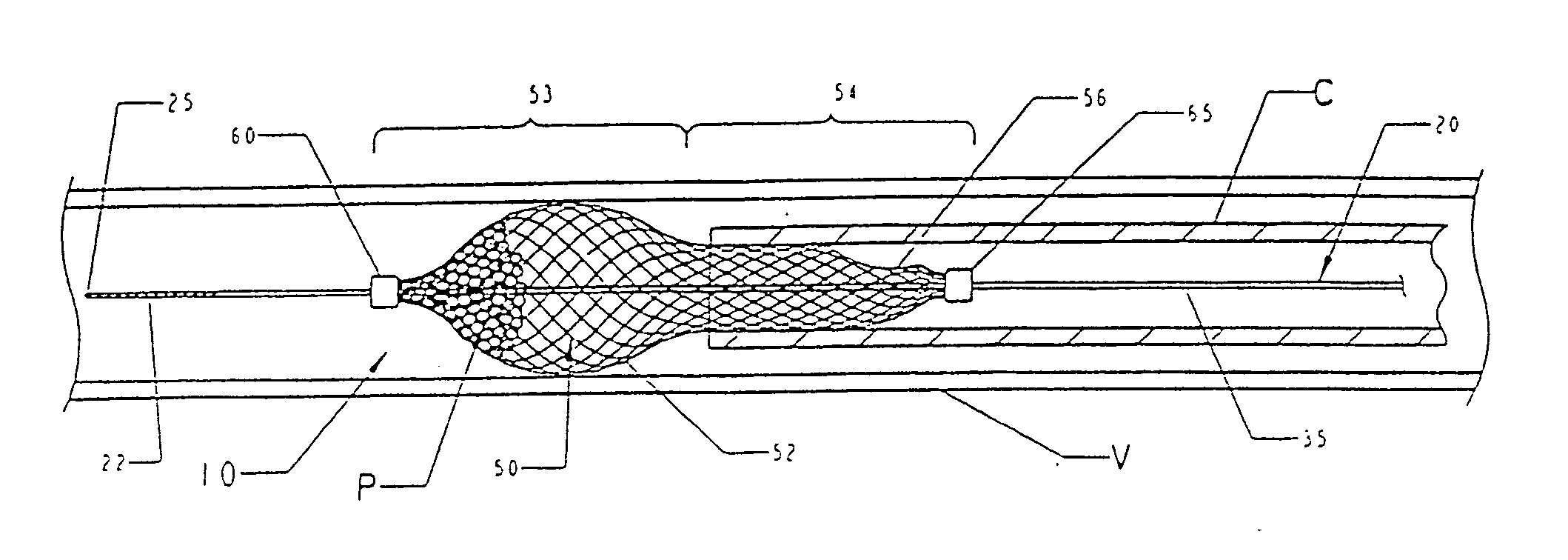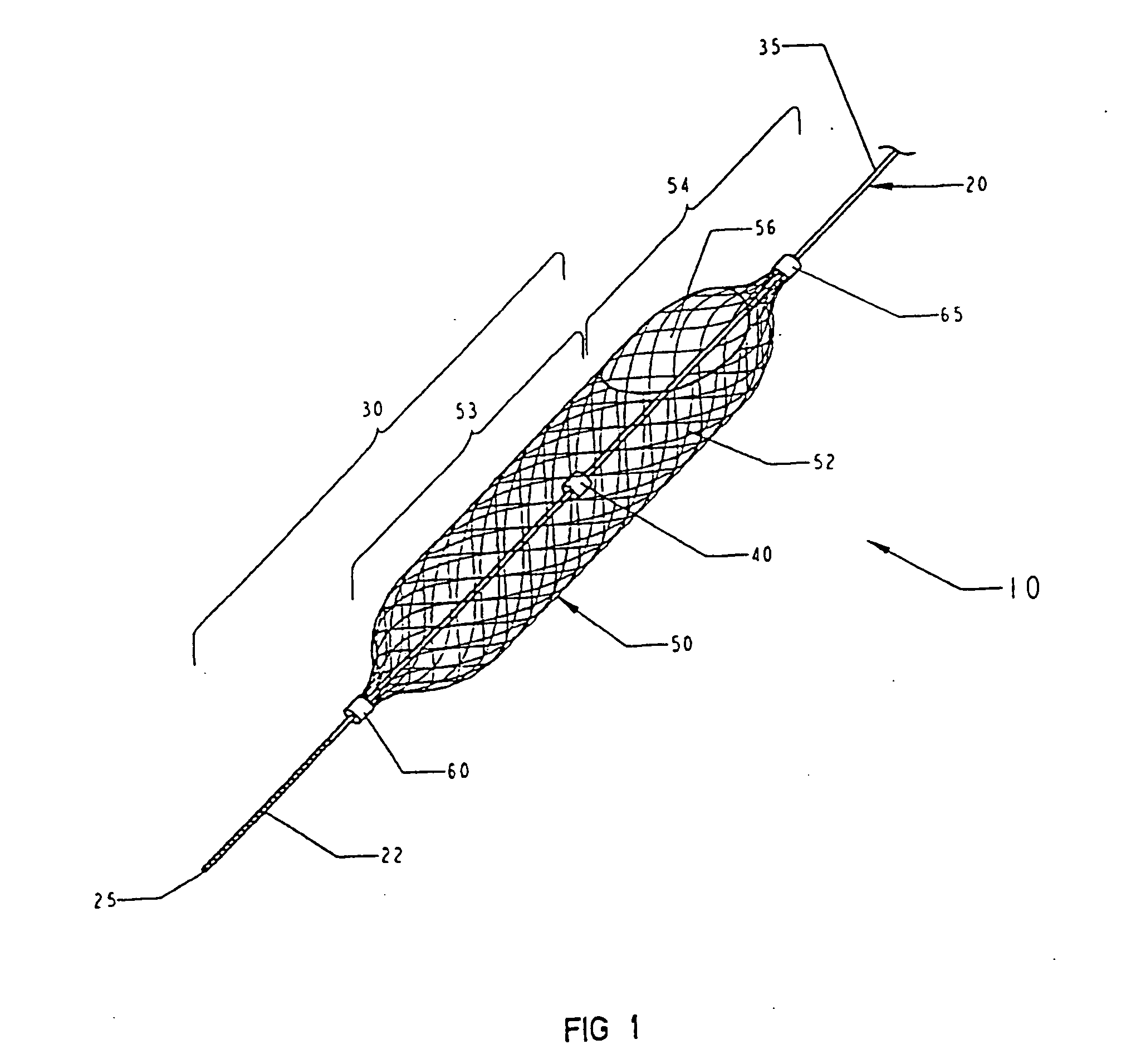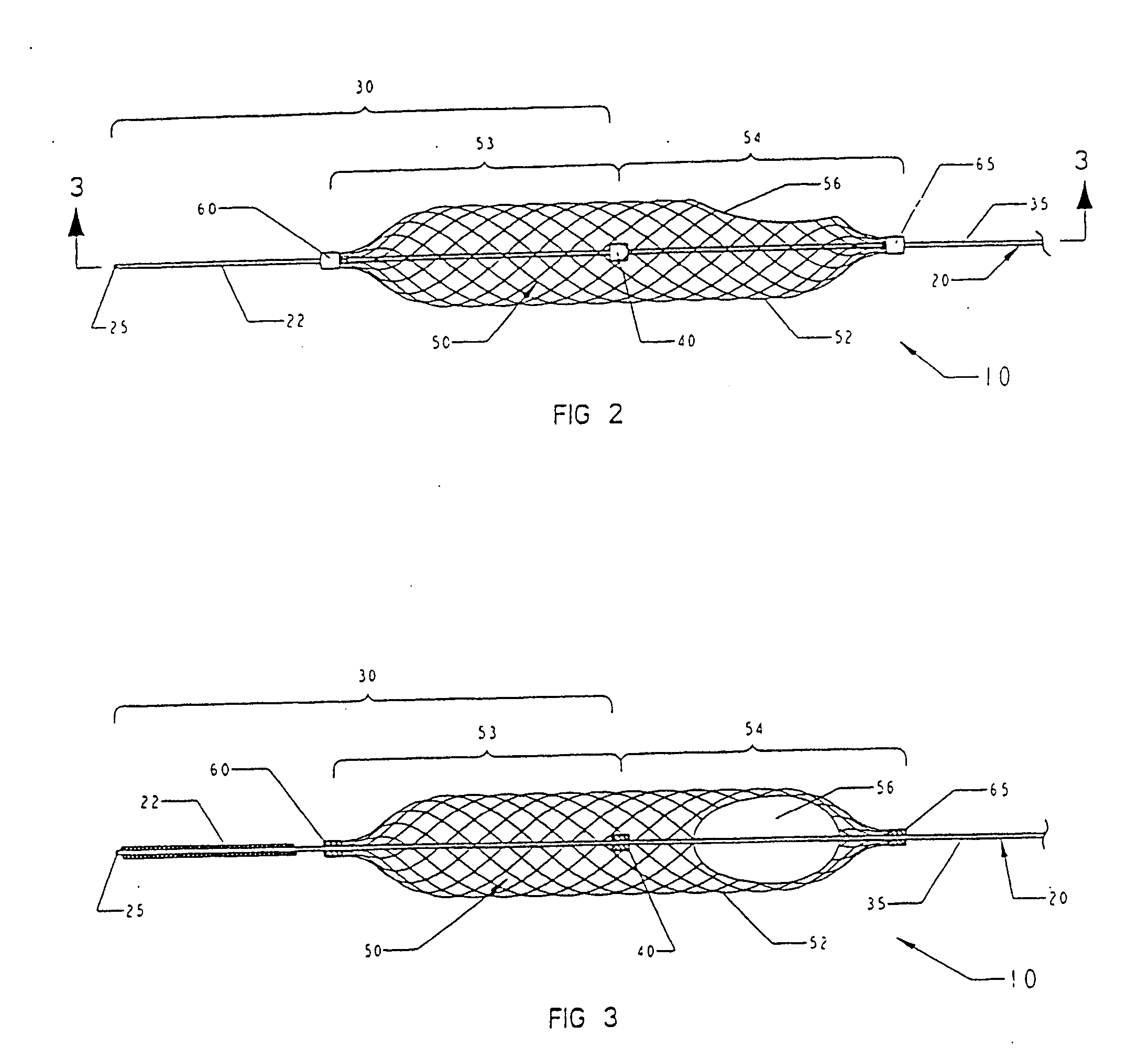Temporary vascular filter
a technology of vascular filter and filter body, which is applied in the field of temporary vascular filter, can solve the problems of inaccurate deployment, cumbersome use of filter, and inability to achieve exceptional effectiveness of filter in actual use, and achieve the effect of effective forming a particulate seal
- Summary
- Abstract
- Description
- Claims
- Application Information
AI Technical Summary
Benefits of technology
Problems solved by technology
Method used
Image
Examples
Embodiment Construction
[0017]FIGS. 1-3 illustrate a filter system 10 in accordance with one embodiment of the invention. This filter system can be used in any channel in a patient's body, including blood vessels, the urinary tract or biliary tract and airways. This filter system 10 is optimally designed to be deployed in a patient's vessel in a minimally invasive procedure, such as by introducing the filter system into a blood vessel through a catheter (as described in greater detail below).
[0018] The filter system 10 of the invention generally includes a mandrel 20 and a filter 50. Conceptually, the mandrel 20 can be thought of as having a primary function of positioning and controlling the deployment of the filter 50 while the filter can be considered the primary therapeutic or functional element of the system 10.
[0019] The mandrel 20 should be fairly flexible to allow the device to be deployed in a curving body passageway without kinking or otherwise inhibiting suitable deployment of the filter 50. W...
PUM
 Login to View More
Login to View More Abstract
Description
Claims
Application Information
 Login to View More
Login to View More - R&D
- Intellectual Property
- Life Sciences
- Materials
- Tech Scout
- Unparalleled Data Quality
- Higher Quality Content
- 60% Fewer Hallucinations
Browse by: Latest US Patents, China's latest patents, Technical Efficacy Thesaurus, Application Domain, Technology Topic, Popular Technical Reports.
© 2025 PatSnap. All rights reserved.Legal|Privacy policy|Modern Slavery Act Transparency Statement|Sitemap|About US| Contact US: help@patsnap.com



